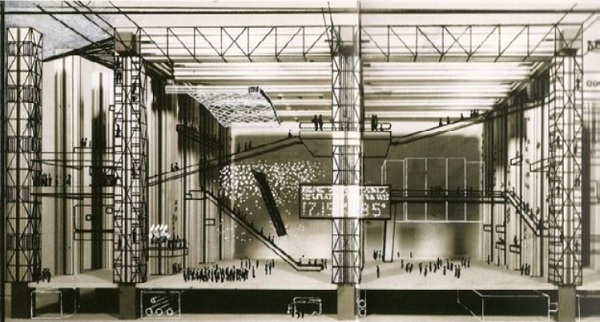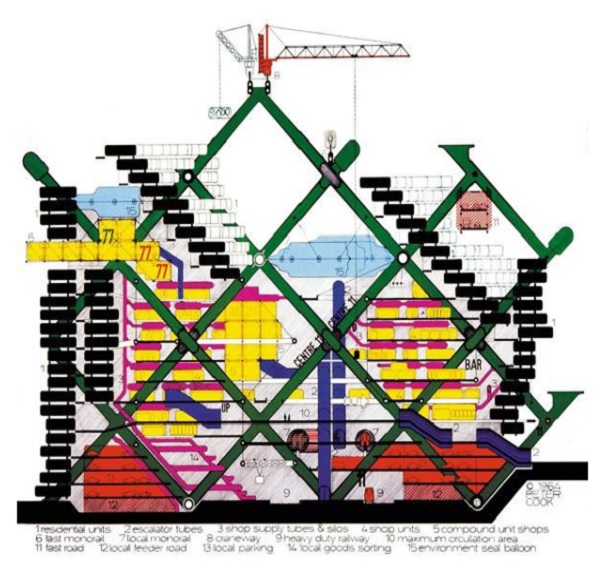Kinetic Envelopes
The Role of Kinetic Envelopes to Improve Energy Performance in Buildings
Fahad Alotaibi
Department of Architectural Studies, University of Calgary, Calgary, Alberta, Canada
College of Architecture and Design, University of Qassim, Almulyda, Saudi Arabia

Figure 1: Pittsburgh children museum
The building envelope plays a crucial role in saving or consuming energy, depending on the type of the envelope and design.
Architects and engineers need to consider many issues when working with envelope designs, including environmental issues, aesthetic appearance, occupant comfort, and view; these aspects make the envelope a multifunctional component, thus the integration approach is the optimal method to address envelope design.

Figure 2: Fun palace-Cedric price.
In the last decade we have witnessed the inclusion of the kinetic envelope in many typologies of buildings. Many scholars believe the kinetic envelope improves the environmental performance of the building.

Figure 3: Plug-in city
The purpose of this paper is to review the current practice and development of the kinetic envelope and to investigate its role in the improvement of energy performance in buildings.

Figure 4: Sketch for the envelope idea.
There has been an interest in interactive, responsive, and intelligent architecture, particularly in the 1960s and 1970s. The new paradigm shift in architecture coincides with advancements in computer science, cybernetics, and building technology that have altered the architecture from a static form to a more kinetic and dynamic form.

Figure 5: Al Bahar Towers.
The origin of the word kinetic is Greek, pertaining to, or caused by motion, thus the main aspect is the motion and integration within the context of the surrounding environment or occupant.
The Children’s Museum of Pittsburgh is a hands-on interactive children’s museum in Pittsburgh, Pennsylvania. It is in the Allegheny Center neighborhood in Pittsburgh’s North side.

Figure 6: Parametric Mashrabiya Model.
The architecture from the last decade has changed to transformable, dynamic, interactive objects to achieve numerous goals, including environmental considerations, human considerations, social interaction, and sense of place.
Micheal Fox states, “The primary goal of intelligent kinetic systems should be to act as a moderator responding to changes between human needs and environmental conditions.”

Figure 7: Thye Mashrabia system of operation.
That will help to achieve many goals, toward a high efficient building, because the building will be more flexible to adapt its envelop for the external weather, which mainly considered in a sun glare and a direct heat gain, that will exemplified in the case studies in this paper.

Figure 8: Council House 2 (CH2), main façade.
The façade is the most important protection structure from the harsh weather, in the outer environment, thus the advanced of this system will help to change from the traditional role as a filter to more active role, which includes in some cases the integration of photovoltaic cells, to generate energy rather than just save energy.

Figure 11: The Q1 Headquarters Building main façade.
This paper focuses on the environmental performance of kinetic façades in buildings by reviewing current practices. The process involved an investigation of literature studies that conducted research to evaluate the performance of kinetic façade systems from numerous perspectives.

Figure 12: The façade consists of metal “feathers” in three different shapes
The kinetic façade proves to be an effective approach to designing a building envelope, as shown by figures of reduced energy consumption, making the kinetic façade an optimal method to address harsh climates, particularly in the case of sun shading, and to provide convenient natural lighting and fresh air.
The case studies examined in this paper are evidence of the proliferation of this type of system. In addition, the results in energy saving is considerable.




























Comments